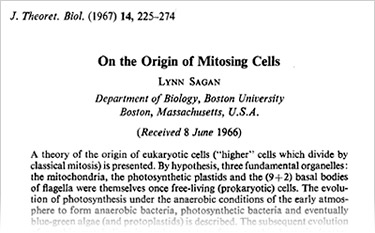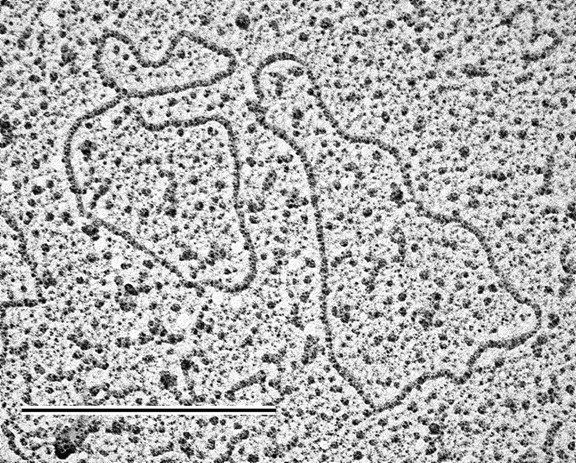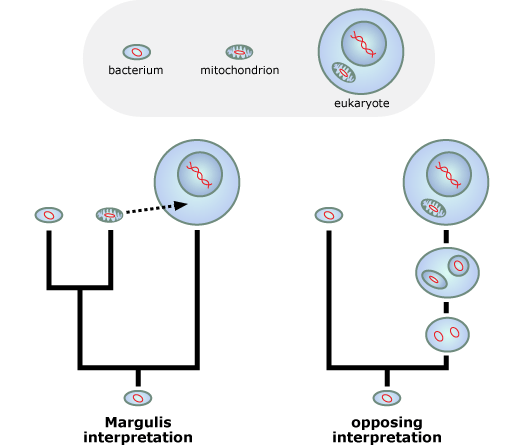Margulis’ article laid out her complete hypothesis — when each endosymbiotic event had happened historically — and all the lines of evidence relevant to all the different types of organelles. She sent out her article to more than a dozen scientific journals, but they all rejected it — not because they thought it was bad science, but because it didn’t fit neatly into any of the single subject areas that these journals usually covered. Margulis’ paper discussed fossils, geology, genetics, biochemistry, and a whole zoo of organisms spread across the tree of life. Finally, the Journal of Theoretical Biology, which covers a range of disciplines, accepted it. The article was published in 1967 under the name Lynn Sagan, since Margulis was married to Carl Sagan at the time.

So was Margulis’ argument enough to convince her colleagues? Yes — and no! Her paper sparked a lot of interest right away and it even won an award for best faculty publication of the year at Boston University where Margulis taught. Many of Margulis’ colleagues working in genetics and microbiology needed little convincing to accept the idea. Some other biologists were swayed by the many lines of evidence she’d assembled. But many researchers in other fields seemed downright disturbed by the idea that vital cell structures like mitochondria could have evolved through endosymbiosis. Some critics argued that they could think up plausible scenarios in which the eukaryotic cell evolved in slow gradual steps and still met the expectations generated by the endosymbiotic hypothesis.

For example, one of the relevant lines of evidence involved the shape of the DNA in mitochondria. Mitochondrial DNA forms a circle, just like bacterial DNA does. Nuclear DNA, on the other hand, is bundled up in linear strands. Some scientists reasoned that this indicated that mitochondria were more closely related to bacteria than to the cells they were inside of and viewed this as evidence supporting Margulis’ hypothesis. Critics, however, interpreted the evidence differently. Based on the knowledge that circular DNA was the first kind of DNA that existed, they thought that bacterial DNA and mitochondrial DNA had both evolved from this early circular DNA, but along separate paths. In other words, they thought that bacterial DNA and mitochondrial DNA were similarly shaped, not because they were closely related, but because neither had ever evolved away from DNA’s original shape.

Maybe that doesn’t sound like a very likely explanation compared to Margulis’ hypothesis, but in some ways, science can be like a courtroom — the burden of proof is often on the person who makes the new claim. It was up to Margulis to convince skeptics that she was right.
Margulis was savvy enough to recognize that convincing other scientists to think seriously about her hypothesis was going to take more than one paper. She had to overcome the scientific community’s resistance to ideas that were unfamiliar to them and that didn’t fit neatly into evolutionary theory as it existed then. To that end, she expanded her arguments into a full length book that, after an initial rejection by a publisher, was finally published in 1970. The book format allowed her to reach a wider interdisciplinary audience, expand on her arguments, and offer counterarguments to some of her critics.
Though the book encouraged many scientists to take the endosymbiotic hypothesis seriously, it didn’t convince them. In science, evidence is king. Ideas live and die by the evidence that supports or refutes them — and most scientists simply wanted stronger evidence before accepting the new idea.
